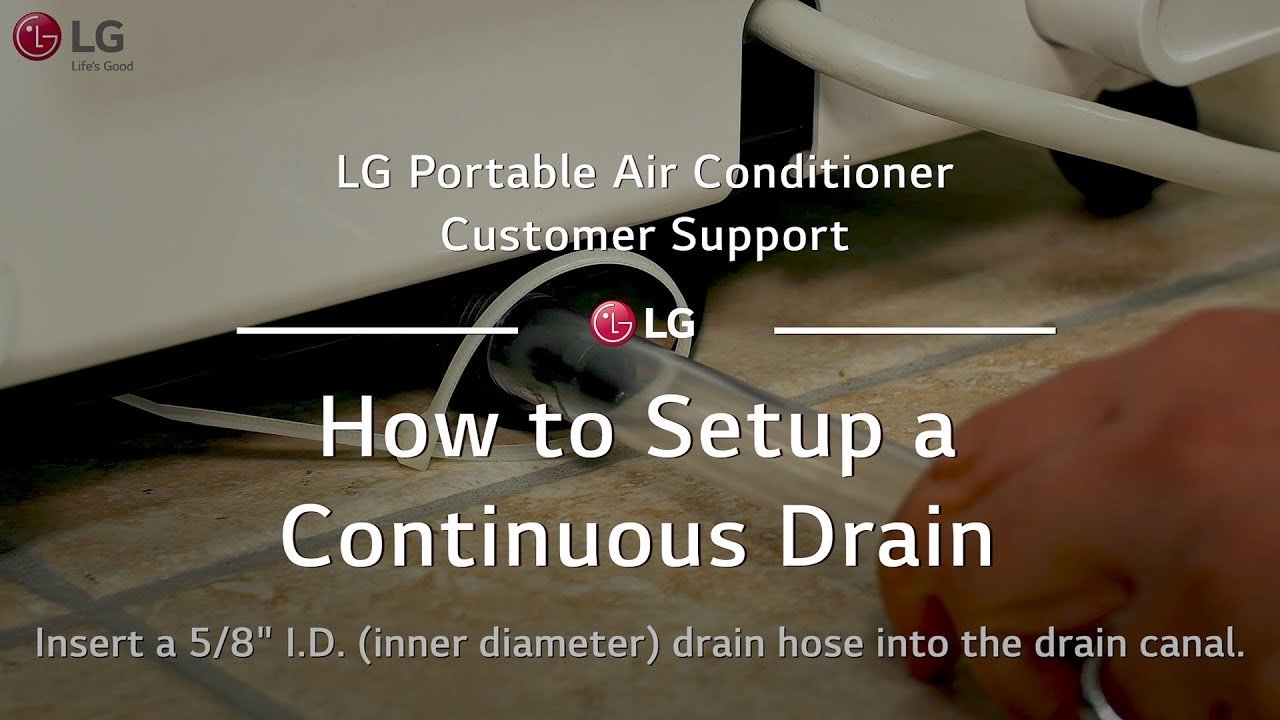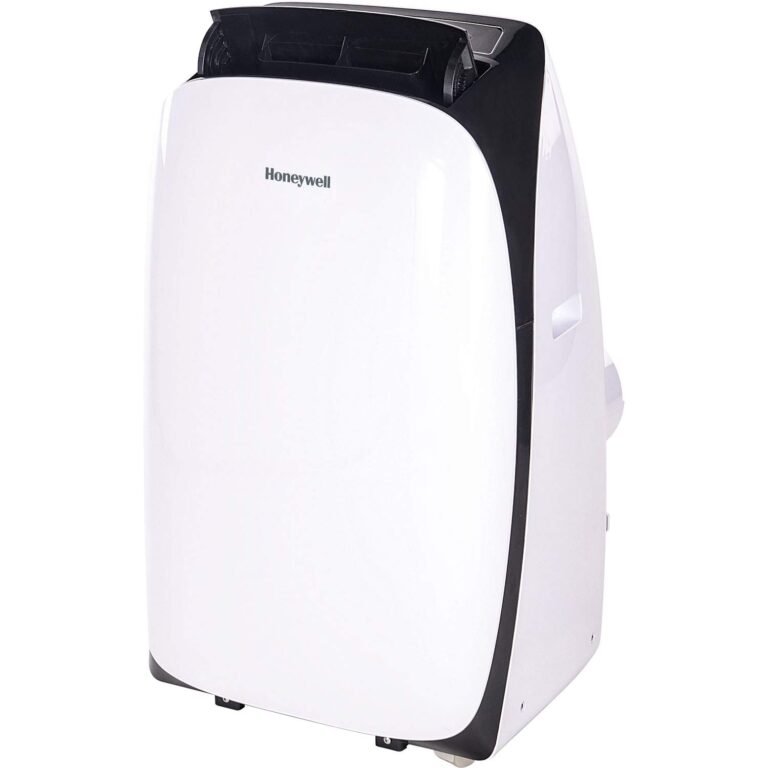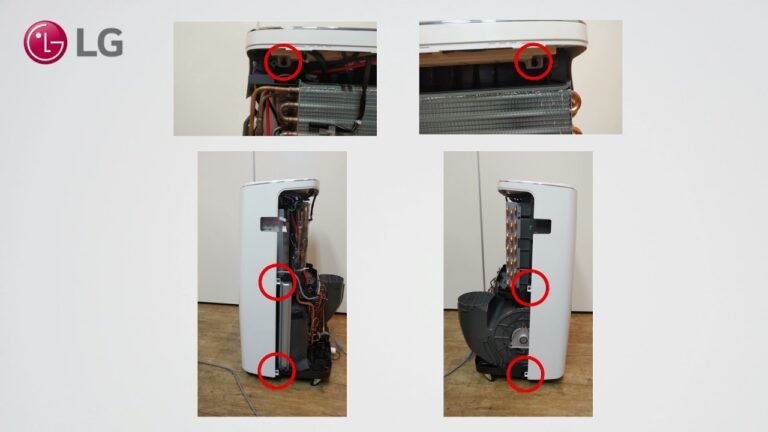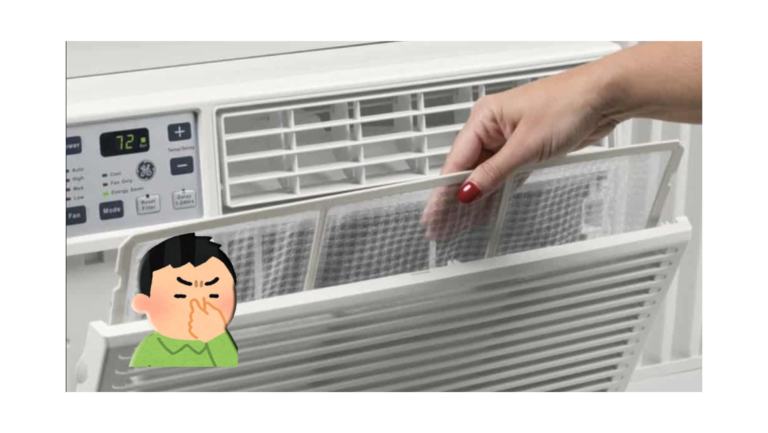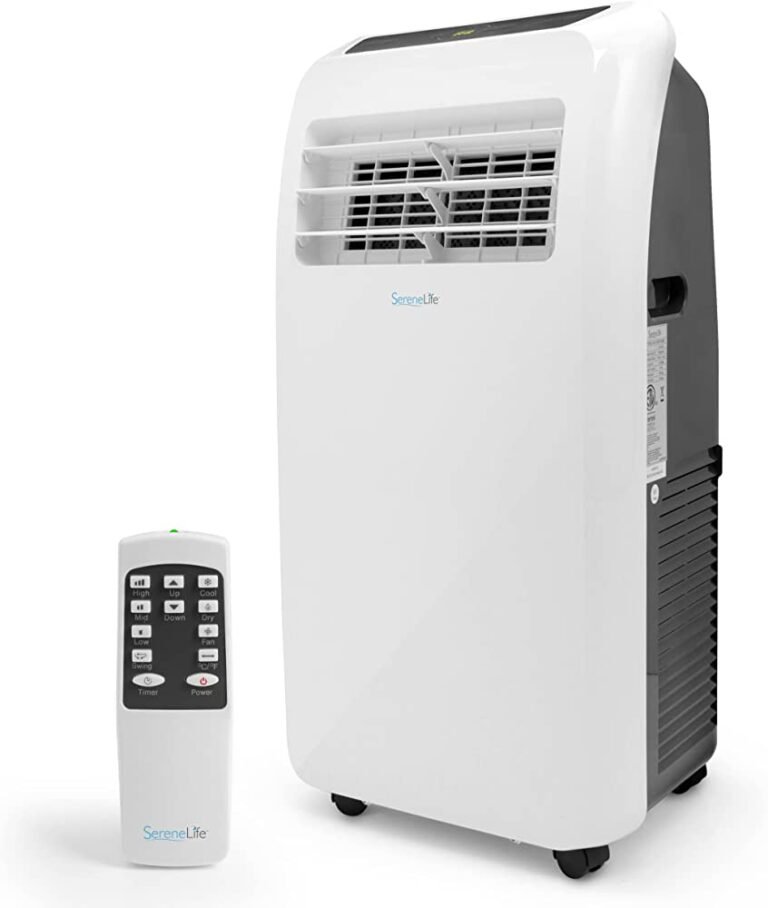Discover the Expert Secrets: How to Drain My Toshiba Portable Air Conditioner
To drain your Toshiba portable air conditioner, locate the drain plug at the bottom of the unit and remove it to let the water drain out. Once the water has fully drained, replace the plug securely.
Now, let’s delve into the details of how to drain a Toshiba portable air conditioner. When a Toshiba portable air conditioner is in use, it accumulates condensation. This water needs to be drained regularly to prevent overflow or damage to the unit.
Draining the air conditioner is a simple process that can be done by following a few steps. First, locate the drain plug at the bottom of the unit. This plug serves as an exit for the accumulated water. Gently remove the plug to allow the water to flow out. Ensure you have a basin or a towel to catch the water. Once the water has fully drained, replace the drain plug securely to prevent any water leakage. By following these steps, you can easily drain your Toshiba portable air conditioner and keep it in optimal working condition.
Understanding The Importance Of Proper Drainage
Proper drainage is crucial when it comes to maintaining your Toshiba portable air conditioner. Learn how to effectively drain it to prevent any water leakage or damage to the unit. Keep your air conditioner running smoothly with the right drainage techniques.
Proper drainage is a crucial aspect of maintaining the performance and longevity of your Toshiba portable air conditioner. Without adequate drainage, your unit can be prone to a host of problems that can significantly impact its functionality. In this section, we will delve into the consequences of improper drainage, how proper drainage affects the performance of your air conditioner, and the potential damage caused by neglected drainage.
The Consequences Of Improper Drainage
Improper drainage can lead to a range of issues that can disrupt the cooling efficiency of your Toshiba portable air conditioner. Some of the consequences include:
- Water leaks: When drainage is not sufficient, excess water can build up inside the unit. This can result in water leaks, leading to damage to your floors, furniture, or other possessions.
- Reduced cooling capacity: Inadequate drainage can hinder the cooling ability of your air conditioner. Water accumulated within the unit can impede the heat exchange process, causing the cooling performance to decline.
- Increased humidity: When drainage is insufficient, moisture can accumulate and contribute to high humidity levels in the room. This not only makes the space uncomfortable but can also create a breeding ground for mold and mildew.
To avoid these consequences, it’s vital to prioritize proper drainage for your Toshiba portable air conditioner.
How Proper Drainage Affects The Performance Of Your Air Conditioner
Proper drainage plays a crucial role in maintaining optimal performance and efficient operation of your Toshiba portable air conditioner. Here’s how it affects the overall functionality of the unit:
- Effective cooling: Adequate drainage ensures that water is effectively removed from the unit, allowing the air conditioner to function optimally. This helps in maintaining the desired temperature and humidity levels in the room, ensuring a comfortable indoor environment.
- Prevention of malfunctions: By ensuring proper drainage, you can prevent the accumulation of excess water within the unit. This helps in avoiding potential malfunctions that can arise from water-related issues, such as clogged filters, reduced airflow, and damaged components.
- Improved energy efficiency: When drainage is functioning correctly, the air conditioner can operate efficiently, consuming less energy. This not only reduces your energy bills but also contributes to a more sustainable and eco-friendly cooling solution.
Remember, maintaining proper drainage is essential to ensure the smooth functioning and longevity of your Toshiba portable air conditioner.
The Potential Damage Caused By Neglected Drainage
Neglecting the drainage of your Toshiba portable air conditioner can lead to various damaging consequences. Here are some potential risks associated with neglected drainage:
- Risk of electrical damage: Accumulated water within the unit can increase the risk of electrical damage. Water leakage can come into contact with electrical components, potentially causing short circuits or irreversible damage to the unit.
- Mold and mildew growth: Insufficient drainage can result in excess moisture, creating the perfect environment for mold and mildew to thrive. These fungal growths not only pose health risks but can also lead to unpleasant odors and damage to the air conditioner.
- Reduced lifespan: Neglecting drainage can significantly impact the lifespan of your Toshiba portable air conditioner. Excessive water retention can cause corrosion, rust, and deterioration of internal components, ultimately resulting in premature failure of the unit.
To avoid these potential damages, it’s crucial to prioritize regular maintenance and ensure the proper drainage of your Toshiba portable air conditioner.
Locating The Drainage System And Components
To drain your Toshiba portable air conditioner, locate the drainage system and components. Follow the instructions provided by the manufacturer to ensure proper drainage and maintenance of your air conditioner.
When it comes to draining your Toshiba portable air conditioner, it’s crucial to familiarize yourself with the different parts of the drainage system. Knowing where to find the drainage outlet and the purpose of each component will ensure a smooth and hassle-free drainage process.
In this section, we will dive into the specifics of identifying the various parts involved in the drainage system, the importance of knowing the location of the drainage outlet, and understanding the purpose of each component.
Identifying The Various Parts Involved In The Drainage System:
To effectively drain your Toshiba portable air conditioner, you need to have a good understanding of the different components in the drainage system. Here’s a breakdown of each part involved:
- Drainage Outlet: This is the external part where the condensed water flows out of the unit. It is typically located at the back or bottom of the air conditioner.
- Drain Hose: This is a flexible tube that connects to the drainage outlet and carries the condensed water away from the unit. It can be detachable or permanently fixed to the air conditioner.
- Drain Pan: Situated inside the air conditioner, the drain pan collects the condensed water and directs it towards the drainage outlet. It is essential to ensure the drain pan is clean and free from any blockages to maintain proper drainage.
Knowing the location and purpose of these components will help you navigate the drainage process with ease.
The Importance Of Knowing The Location Of The Drainage Outlet:
Understanding the exact location of the drainage outlet is crucial for effective drainage. Here’s why it’s important:
- Prevents Water Overflow: Knowing where the drainage outlet is will help you position your air conditioner in a way that ensures proper drainage. If the outlet is obstructed or facing upwards, it can lead to water overflow and potential damage to your unit.
- Easy Maintenance: Locating the drainage outlet enables convenient access for regular cleaning and maintenance. By keeping the outlet clear and free from any debris or blockages, you can ensure uninterrupted water flow and optimal performance of your air conditioner.
By identifying the location of the drainage outlet, you can take the necessary precautions to avoid any potential issues related to drainage.
Understanding The Purpose Of Each Component In The Drainage System:
Each component in the drainage system serves a specific purpose in ensuring efficient moisture removal. Let’s explore the significance of each part:
- Drainage Outlet: It allows the condensed water to exit the air conditioner, preventing moisture buildup and enhancing the cooling efficiency of the unit.
- Drain Hose: This flexible tube provides a pathway for the condensed water to flow away from the air conditioner. It ensures proper drainage and prevents water from accumulating inside the unit.
- Drain Pan: The drain pan collects and directs the condensed water towards the drainage outlet. It plays a vital role in preventing water leakage, ensuring the proper functioning of the unit.
Understanding the purpose of each component will help you troubleshoot any drainage-related issues effectively and maintain the overall performance of your Toshiba portable air conditioner.
Familiarizing yourself with the various parts of the drainage system, knowing the location of the drainage outlet, and understanding the purpose of each component are essential for a hassle-free drainage process. By following these guidelines, you can ensure effective moisture removal and optimal performance of your Toshiba portable air conditioner.
Step-By-Step Guide To Draining Your Toshiba Portable Air Conditioner
This step-by-step guide provides a simple and effective method for draining your Toshiba portable air conditioner. With clear instructions and easy-to-follow steps, you can quickly and efficiently maintain your air conditioner’s performance.
If you have a Toshiba portable air conditioner, it’s important to know how to properly drain it to ensure optimal performance and prevent any potential water damage. Follow this step-by-step guide to efficiently drain your Toshiba portable air conditioner.
Preparing The Necessary Tools And Materials:
To get started, gather the following tools and materials:
- Bucket or basin: This will be used to collect the drained water.
- Towel or sponge: This will help clean up any spills or excess water.
Shutting Down And Unplugging The Air Conditioner:
Before you begin the draining process, make sure to shut down and unplug your Toshiba portable air conditioner. This will prevent any accidents or electrical hazards.
Locating And Accessing The Drainage Outlet:
Next, locate the drainage outlet on your Toshiba portable air conditioner. It is usually located at the bottom or back of the unit. Once you have found it, carefully remove the plug or cap to access the drainage outlet.
Removing And Cleaning The Drainage Pan:
Once you have accessed the drainage outlet, remove the drainage pan. This pan collects the condensate that is produced when the air conditioner cools the air. Empty the contents of the drainage pan into the bucket or basin. Then, using a towel or sponge, clean the pan to remove any dirt, debris, or mold that may have accumulated.
Clearing Any Blockages From The Drainage Pipe:
Inspect the drainage pipe connected to the drainage pan for any blockages. If you notice any blockages, use a small brush or pipe cleaner to gently remove them. Clearing any blockages will ensure proper drainage and prevent water from backing up.
Flushing The Drainage Pipe With A Cleaning Solution:
To further clean the drainage pipe and prevent the growth of mold or mildew, flush it with a cleaning solution. Mix equal parts water and vinegar or use a commercially available air conditioner cleaner. Pour the solution into the drainage pipe and let it sit for a few minutes.
Then, flush it out with water to remove any debris or residue.
Reassembling The Drainage System And Checking For Leaks:
After cleaning the drainage pan and pipe, securely reassemble the drainage system. Make sure all connections are tight and properly aligned. Once reassembled, check for any leaks or drips. If you notice any leaks, tighten the connections or replace any worn-out components.
Restoring Power And Restarting The Air Conditioner:
Finally, plug in the Toshiba portable air conditioner and restore power. Turn on the air conditioner and observe if the drainage system is functioning effectively. Check that the condensate is flowing out of the drainage outlet without any leaks or puddles.
By following this step-by-step guide, you can expertly drain your Toshiba portable air conditioner and ensure its proper functioning. Regular maintenance and attention to the drainage system will not only maximize performance but also extend the lifespan of your unit.
Keep cool and comfortable while keeping your Toshiba portable air conditioner in top shape.
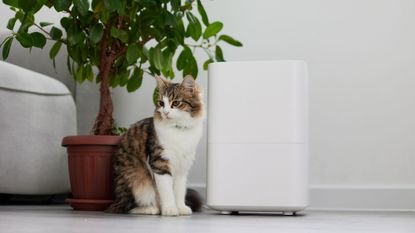
Credit: www.homesandgardens.com
Tips And Tricks For Effective Drainage Maintenance
Maintaining effective drainage for your Toshiba portable air conditioner is crucial. Follow these tips and tricks to ensure proper functioning and avoid any potential issues with draining the unit.
Maintaining the drainage system of your Toshiba portable air conditioner is crucial for its optimal performance and longevity. By following these tips and tricks, you can ensure efficient drainage and avoid common issues that may arise:
How Often To Perform Maintenance On The Drainage System
- Clean the drainage system at regular intervals to prevent clogs and blockages.
- Perform maintenance at least once every three months to keep the system running smoothly.
Preventive Measures To Avoid Drainage Issues
- Position the air conditioner on a level surface to facilitate proper drainage.
- Regularly check and clean the air filters to prevent dust and debris accumulation.
- Ensure the window or vent kit is properly sealed to prevent moisture from entering and causing drainage problems.
Using A Condensate Pump For Improved Drainage
- Consider using a condensate pump for enhanced drainage efficiency, especially if your air conditioner is installed in a basement or lower-level area.
- The condensate pump will effectively pump out the collected water, reducing the risk of overflow and water damage.
Troubleshooting Common Drainage Problems
- If you notice water pooling around your air conditioner, check for any clogs or blockages in the drainage pipe. Clear any obstructions to restore proper drainage.
- Ensure that the drainage hose is properly connected and securely fitted to both the air conditioner and the designated drainage outlet.
- If the condensate pump is not working correctly, inspect the power supply and ensure it is properly connected. Additionally, ensure that the condensate pump is level to allow for optimum drainage.
Hiring A Professional For Complex Drainage Issues
- In case of complex drainage issues or if you are unsure about performing maintenance yourself, it is recommended to hire a professional HVAC technician.
- An experienced technician will have the expertise to diagnose and resolve any complicated drainage problems and ensure your Toshiba portable air conditioner functions efficiently.
Maintaining the drainage system of your Toshiba portable air conditioner is essential for optimal performance and prolonged lifespan. By following these tips and tricks for effective drainage maintenance, you can enhance your air conditioner’s efficiency and avoid common drainage issues.
Remember, regular maintenance is key to keeping your unit running smoothly and providing you with cool and comfortable air.
Frequently Asked Questions On How Do I Drain My Toshiba Portable Air Conditioner
Where Is The Drain On A Toshiba Window Air Conditioner?
The drain on a Toshiba window air conditioner is usually located at the back or bottom of the unit.
Do I Need To Drain My Portable Air Conditioner?
No, portable air conditioners do not require draining.
Why Does My Toshiba Portable Ac Keep Filling Up With Water?
The Toshiba Portable AC fills up with water due to condensation from the cooling process.
How Do You Drain A Portable Air Conditioner Without A Drain Hose?
To drain a portable air conditioner without a drain hose, position it near a window or drain, and place a shallow container below the drain plug to collect the condensation. Empty the container regularly to prevent overflow.
Conclusion
Knowing how to properly drain your Toshiba portable air conditioner is crucial for its optimal performance and functioning. By following the steps outlined you can prevent water buildup, mold growth, and potential damage to your unit. Regularly inspecting and cleaning the drainage system will help maintain your air conditioner’s efficiency and extend its lifespan.
Remember to always consult the user manual for specific instructions and use caution when handling electrical components. By taking the time to properly drain your Toshiba portable air conditioner, you can ensure that it continues to cool your space effectively and efficiently for years to come.
So, don’t overlook this maintenance task and enjoy the benefits of a well-maintained air conditioning system.

